How Does Efficient Battery Management Impact Smartwatch Inventory and Supply Chain?
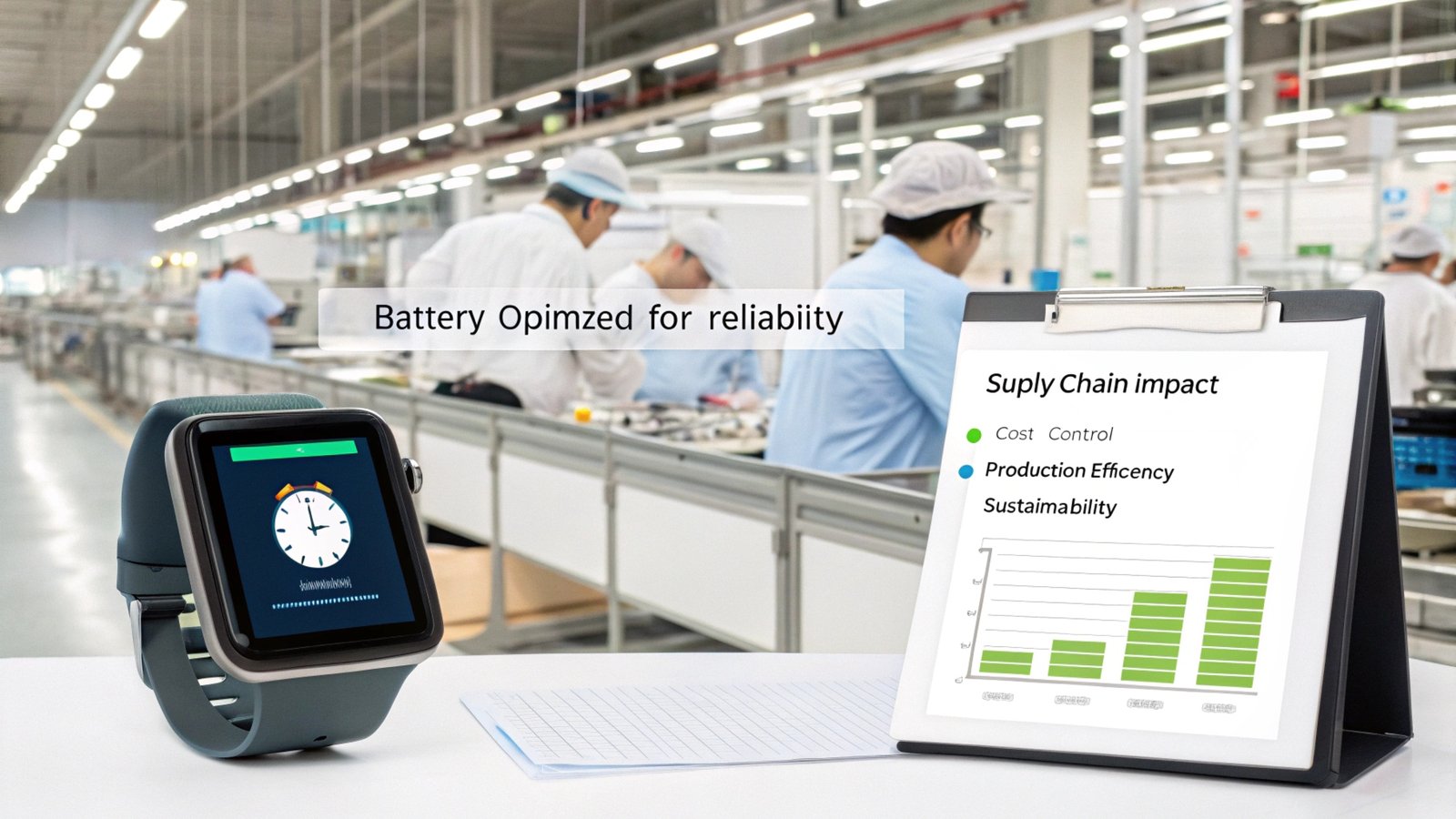
Efficient battery management is a key factor in optimizing the inventory and supply chain processes for smartwatch manufacturers. Proper battery management not only ensures product reliability but also has a significant impact on costs, production schedules, customer satisfaction, and even sustainability efforts. Let’s explore how battery management can streamline your business operations and enhance overall performance.
Efficient battery management influences every aspect of your smartwatch’s supply chain—from cost control to production efficiency, customer satisfaction, and environmental impact.
Managing smartwatch battery performance effectively can directly benefit your business by improving product quality, reducing unnecessary costs, and enhancing customer loyalty. But how can brands optimize battery management to make their supply chain more efficient? Let’s take a deeper look.
How Can Efficient Battery Management Help Control Costs and Improve Profitability?
Battery management plays a significant role in controlling costs. When battery life and performance are optimized, companies experience fewer returns, less waste, and lower overall operating expenses, all of which contribute to improved profitability.
Effective battery management cuts down on waste, lowers returns, and reduces production costs, helping you run a more profitable operation.
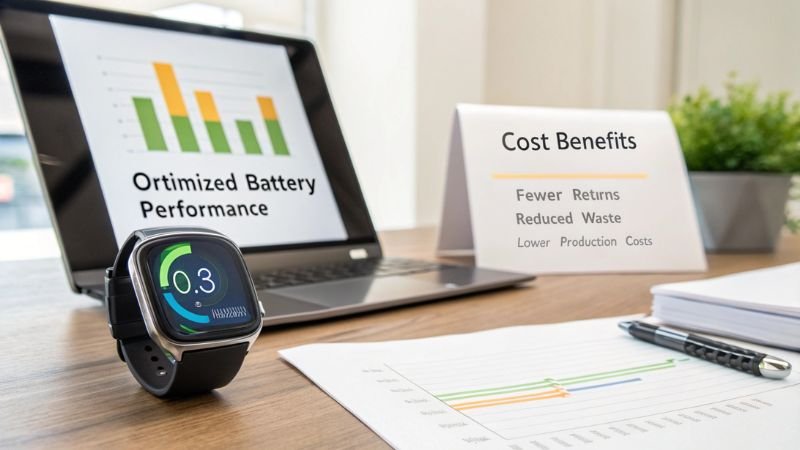
Battery optimization helps reduce costs1 in multiple ways. First, if your smartwatches have better battery efficiency, they will likely need fewer repairs or replacements, leading to lower warranty claims and fewer product returns. Customers are more likely to be satisfied with a product that lasts longer, which can also minimize the amount of product that has to be replaced under warranty.
Additionally, efficient battery management can help reduce production costs by allowing the company to focus on more cost-effective energy sources2 and avoid wasting expensive battery materials. With fewer defective units being returned or scrapped, you can also avoid the added logistical costs associated with handling these returns.
By reducing operational inefficiencies and cutting down on waste, effective battery management directly boosts your profit margins.
How Does Efficient Battery Management Optimize Production Planning and Scheduling?
Efficient battery management is key to optimizing production planning and scheduling, ensuring your manufacturing process runs smoothly and on time. When battery efficiency is well-managed, production teams can better predict timelines, minimize delays, and streamline overall manufacturing workflows.
Optimizing battery performance allows for more predictable production schedules, reducing the chances of delays and ensuring that production runs smoothly.
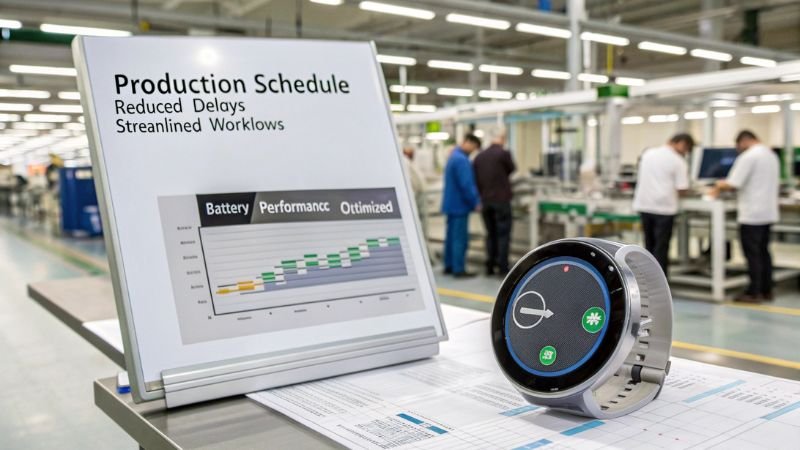
Production schedules3 rely on accurate forecasts of battery life and performance. If a batch of smartwatches is expected to last longer on a single charge, the production team can plan accordingly to ensure timely delivery. For example, if batteries last longer, you may need fewer resources dedicated to battery assembly, giving you room to scale up other parts of the production process without causing delays.
Efficient battery management also minimizes the risk of unexpected product failures or returns that might delay product shipments. When battery quality and performance are carefully controlled, you can more accurately predict your supply chain needs, ensuring that raw materials and components are available on time, which optimizes production efficiency4 and resource allocation.
How Does Efficient Battery Management Improve Demand Forecasting and Supply Chain Visibility?
By integrating efficient battery management into your overall strategy, you can improve demand forecasting and gain better visibility across your supply chain. Accurate data on battery life and usage patterns helps manufacturers predict when to reorder components, how much to stock, and when to scale production.
Efficient battery management improves supply chain forecasting by providing valuable data that can be used to predict demand, reduce stockouts, and avoid overproduction.
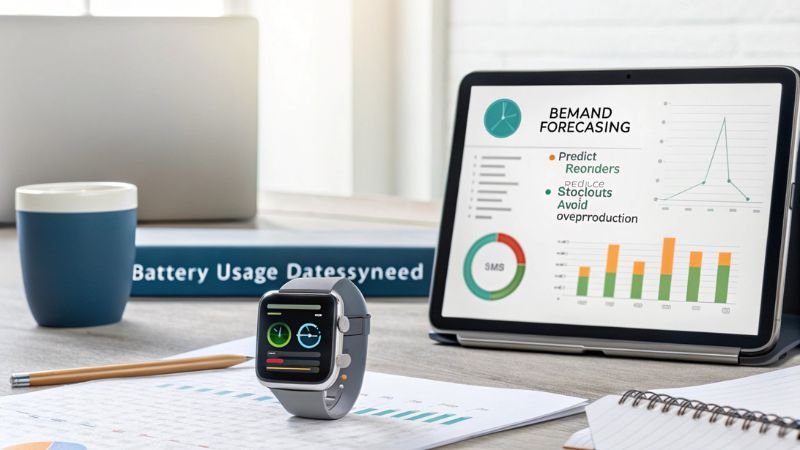
Battery life data gives you insights into how long your products last and what maintenance or replacement cycles may look like. These insights are crucial for demand forecasting5. For example, if your smartwatches have a reliable battery lifespan of 12–18 months, you can predict when customers will likely need replacements, ensuring that you have enough stock to meet demand.
Additionally, efficient battery management allows for better synchronization between production facilities, warehouses, and distribution centers. When battery lifespan data6 is integrated with supply chain management systems, businesses can better track inventory and make adjustments in real time. This leads to improved visibility, reducing the chances of stockouts or excess inventory, both of which can negatively impact the bottom line.
How Does Efficient Battery Management Enhance Customer Satisfaction and Brand Loyalty?
Customers expect smartwatches that perform reliably, especially when it comes to battery life. If a device has efficient battery management, it means that customers can rely on it for longer periods of use, leading to a more positive user experience and greater brand loyalty.
Optimizing battery life directly impacts customer satisfaction by ensuring longer use times, fewer charges, and a more reliable experience.
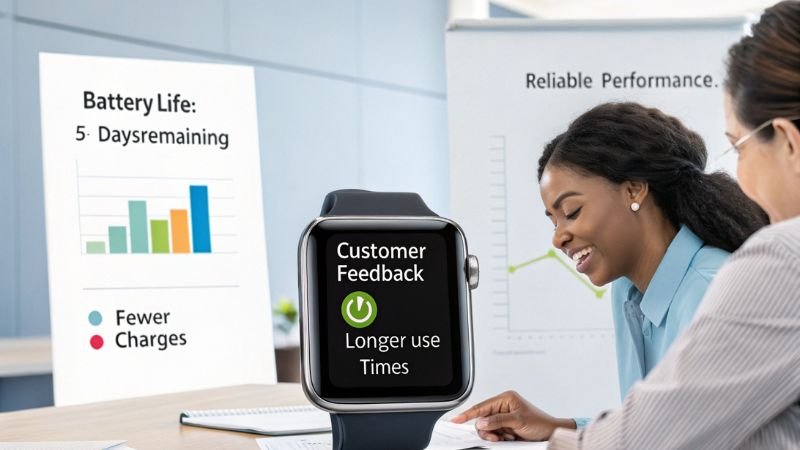
When battery life is optimized, your customers experience fewer interruptions in their daily activities. They don’t need to worry about constantly recharging their device or experiencing battery drain during crucial times. This sense of reliability improves the overall user experience7, which is critical in building customer trust and loyalty.
In turn, satisfied customers are more likely to return for future purchases and recommend your brand to others, creating a solid base of repeat buyers. Additionally, when customers feel their devices are backed by efficient battery performance, they tend to leave positive reviews, which further increases brand reputation8 and long-term success.
What Role Does Efficient Battery Management Play in Sustainability and Regulatory Compliance?
In today’s world, sustainability is a growing concern for both consumers and businesses. Efficient battery management plays a vital role in reducing environmental impact and ensuring compliance with regulations related to waste disposal, energy consumption, and material sourcing.
By managing battery usage effectively, companies can reduce electronic waste, use materials more efficiently, and comply with environmental regulations.

Sustainability efforts9 in the smartwatch industry often focus on reducing the carbon footprint of production processes and the disposal of electronic waste (e-waste)10 . Optimizing battery performance can lead to longer-lasting devices, reducing the frequency of battery replacements and the need for disposing of batteries prematurely. This is not only better for the environment but can also help your company meet increasingly stringent regulations regarding product life cycles and waste management.
Furthermore, using energy-efficient batteries and materials sourced sustainably aligns your brand with growing consumer demands for eco-friendly products. Complying with environmental regulations also reduces the risk of penalties and improves brand image, making it a win-win for both your business and the planet.
How Can Efficient Battery Management Reduce Downtime and Improve Product Availability?
One of the biggest operational challenges for smartwatch manufacturers is managing product availability. Efficient battery management can significantly reduce downtime caused by defective units, warranty claims, and delays in product availability.
By managing batteries efficiently, you reduce the chance of product defects, which helps improve product availability and reduce downtime.
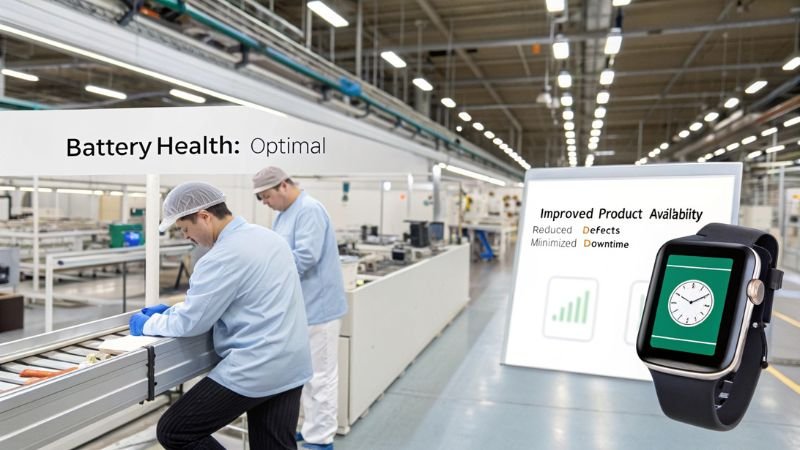
When batteries are well-optimized, smartwatches tend to have fewer failures, which means fewer products need to be recalled or repaired. This helps prevent unnecessary downtime11 in your production line and ensures that more devices are available for sale to customers. Fewer issues with battery performance also mean fewer delays in getting products to market.
Having a more predictable production and delivery schedule means that products are more readily available for customers, reducing the risk of stockouts and boosting customer satisfaction. By ensuring that your smartwatches have optimal battery performance, you can minimize production disruptions and improve your product availability12, which can lead to higher sales.
How Does Efficient Battery Management Integrate with Supply Chain Technologies for Better Logistics?
Efficient battery management can seamlessly integrate with modern supply chain technologies to enhance logistics operations. Using data-driven insights, businesses can better plan and optimize their logistics, ensuring timely delivery, reducing excess inventory, and improving overall supply chain efficiency.
Battery management systems can integrate with logistics technologies, improving real-time tracking, reducing lead times, and ensuring smoother operations across the entire supply chain.
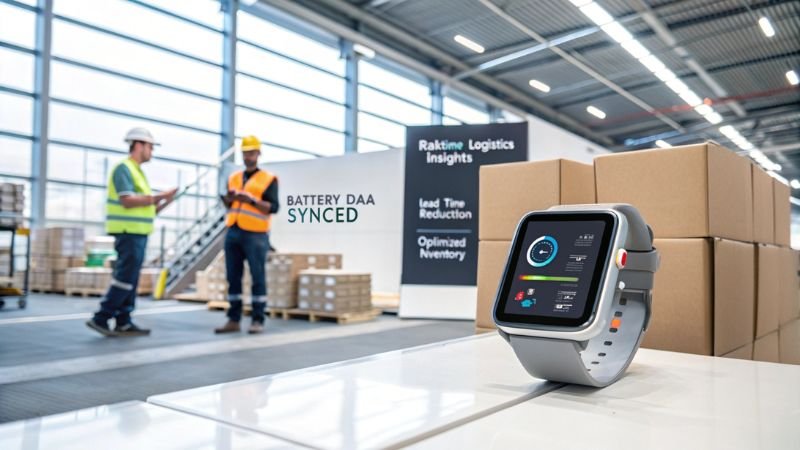
By incorporating battery performance data into your supply chain technologies13, you can ensure that each smartwatch is fully charged and ready for delivery, optimizing logistics operations. For example, if battery data shows that certain devices last longer, you can adjust shipping schedules to reduce delays. Additionally, predictive analytics14 based on battery usage patterns can help you plan for seasonal fluctuations in demand, making it easier to meet customer expectations.
Integrating battery management into your logistics technology allows for real-time updates, ensuring that you’re always aware of battery-related issues before they affect product availability. It also helps streamline warehousing operations by giving you more accurate data on when products are likely to run out, so you can replenish stocks in a timely manner.
Battery Regulations and Storage Requirements: What You Need to Know
Battery management isn’t just about performance—it’s also about adhering to strict safety and storage regulations. Batteries, especially lithium-ion types commonly used in smartwatches, are classified as hazardous materials due to their flammability and potential for explosion. As such, there are specific guidelines on how they must be stored, handled, and transported to minimize risks and comply with safety regulations.
Smartwatch batteries must be stored and handled according to strict safety regulations to prevent hazards like fire or explosion, ensuring compliance and safe product delivery.

Batteries should be stored in cool, dry places, away from direct sunlight, heat sources, and any flammable materials. Warehouse storage15 areas must be equipped with fireproof materials, clear signage, and ventilation to ensure safety. Moreover, transportation of batteries, especially via air, sea, and land, requires specific documentation and certifications to meet global safety standards.
For air freight, certifications like the UN38.316 report, which ensures compliance with international air transport regulations, are essential. Additionally, the MSDS17 (Material Safety Data Sheet) provides details on handling, storage, and transportation requirements for hazardous materials. Sea and land transport also require similar reports to ensure the safety of the batteries during transit.
FBA18 (Fulfillment by Amazon) sellers must pay special attention to these regulations, as failure to comply with battery handling rules can result in fines, shipment delays, or the refusal to ship products. Understanding and adhering to these requirements is critical to maintaining smooth logistics operations and avoiding costly compliance issues.
Conclusion
Efficient battery management is essential not only for maximizing the performance and longevity of your smartwatches but also for optimizing your inventory and supply chain processes. By integrating battery optimization into your production workflows, businesses can improve profitability, reduce waste, and increase customer satisfaction while ensuring compliance with safety regulations. Smartwatch manufacturers and importers who prioritize battery management are better positioned to meet customer expectations, comply with environmental regulations, and thrive in a competitive marketplace.
-
How does efficient battery management reduce costs and improve profitability? – This resource explains how efficient battery management in the production of smartwatches can reduce operational costs and improve profitability by minimizing waste and returns. ↩
-
What are the benefits of battery optimization for manufacturers? – Learn how battery optimization can help manufacturers reduce costs related to repairs, returns, and production inefficiencies, ultimately boosting profitability. ↩
-
How does battery optimization improve production scheduling? – This resource explains how optimizing battery management leads to more predictable production schedules, reducing delays and improving overall manufacturing efficiency. ↩
-
What are the benefits of effective battery management in production? – Learn how managing battery efficiency can streamline workflows and improve the predictability of manufacturing timelines by reducing unexpected product failures or returns. ↩
-
How does battery management improve demand forecasting in manufacturing? – Learn how efficient battery management provides valuable data to improve demand forecasting, prevent stockouts, and optimize production schedules for manufacturers. ↩
-
How can supply chain visibility be improved with battery data? – This resource explores how integrating battery data into supply chain management systems helps businesses track inventory and synchronize production for better visibility. ↩
-
How does battery optimization influence customer satisfaction? – This resource explains how optimizing battery life enhances customer satisfaction by improving the user experience and reducing the need for frequent recharges. ↩
-
Why is brand loyalty influenced by product reliability and battery performance? – Learn how efficient battery management leads to greater reliability, fostering long-term brand loyalty and encouraging repeat purchases and positive reviews. ↩
-
How does efficient battery management contribute to sustainability? – This source explains the role of battery optimization in reducing e-waste, using materials sustainably, and aligning with environmental regulations for business compliance. ↩
-
What are the regulatory requirements for battery disposal and recycling? – Learn about the regulations that companies must follow regarding the disposal of electronic waste, battery recycling, and energy consumption to remain compliant. ↩
-
How can efficient battery management reduce downtime in production? – This source explains how optimizing battery life and performance can prevent defects, reduce downtime, and improve product availability, benefiting both production and sales. ↩
-
What is the impact of battery defects on product availability? – Learn how battery defects contribute to production delays and stockouts, and how efficient battery management helps improve availability and meet customer demand. ↩
-
How can battery management integrate with logistics technologies? – This source explores how battery performance data can be integrated with supply chain systems, improving real-time tracking, reducing delays, and optimizing logistics operations. ↩
-
What are the benefits of predictive analytics in supply chain logistics? – Learn how predictive analytics can optimize supply chain processes, especially in logistics, by forecasting demand and improving inventory management. ↩
-
What are the regulations for storing and transporting lithium-ion batteries? – This source explains the safety regulations and certifications required for transporting and storing lithium-ion batteries, essential for compliance and risk prevention. ↩
-
UN 38.3 Testing for Lithium Batteries ↩
-
What is a battery MSDS (material safety data sheet)? ↩
-
How can FBA sellers comply with battery handling regulations? – This article discusses the specific battery handling rules for Fulfillment by Amazon (FBA) sellers and how failure to comply can lead to fines, shipment delays, and other operational issues ↩


